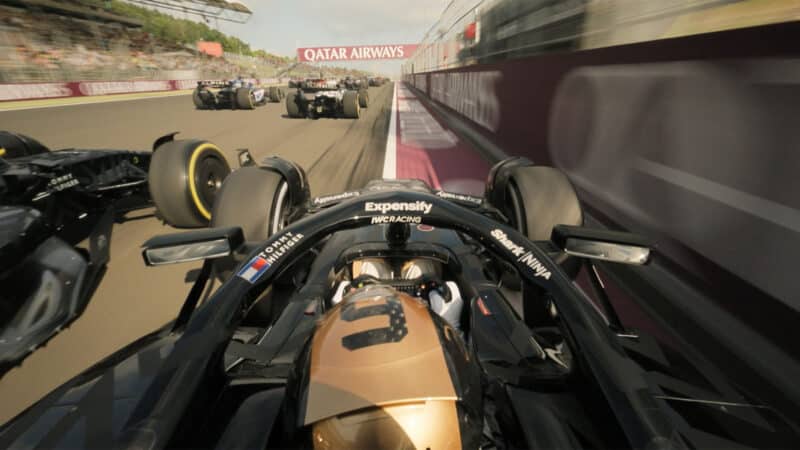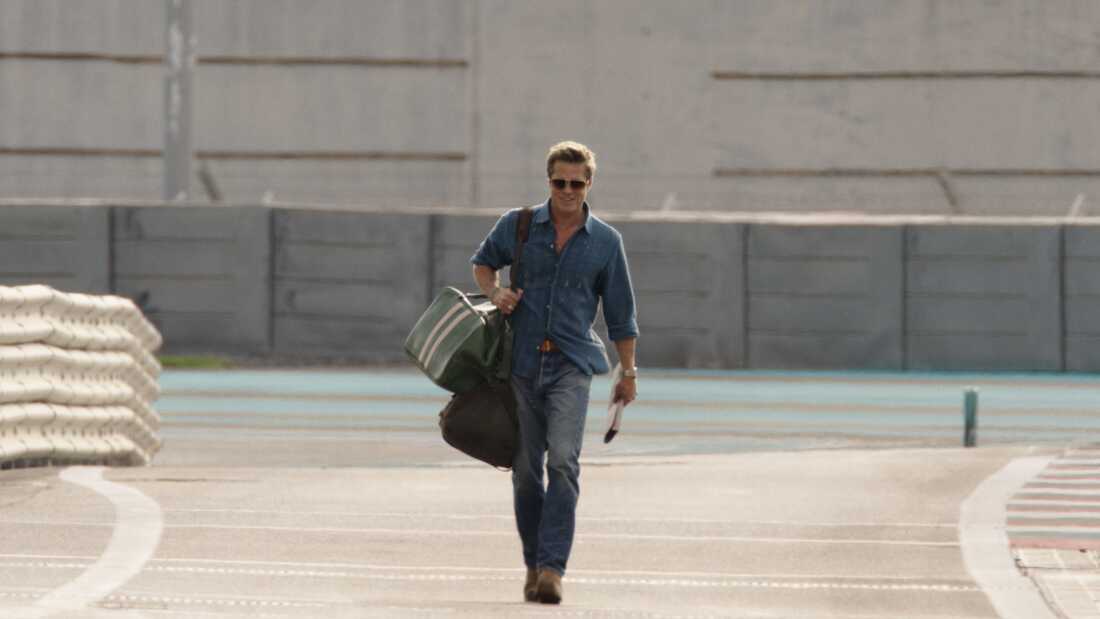
F1 Movie: debunking the "most authentic" film – Rule mistakes & realism check
The highly anticipated F1 Movie, released in June 2025, promised an exhilarating dive into the world of Formula 1. With Brad Pitt starring and Lewis Hamilton co-producing, the filmmakers boldly declared their ambition to create "the most authentic racing movie ever made." This claim, naturally, set a towering bar for realism among the sport's fervent fanbase.
While the film certainly delivers breathtaking on-track action and compelling drama, keen-eyed F1 enthusiasts might find themselves raising an eyebrow, and perhaps even a red flag, at certain liberties taken with the sport's famously strict rules and intricate realities.
From questionable pit lane antics to impossible comebacks, let's pull back the curtain on where the APXGP story veered off the real-life Grand Prix track, dissecting some of the biggest "mistakes" in a movie that aimed for unparalleled authenticity.
1. The celebratory sprint to the podium
Movie Moment: After a hard-fought race, APXGP finally scores points, and the entire crew sprints onto the fenced podium enclosure to celebrate with the drivers. It's an emotional, adrenaline-fueled moment of triumph.
Real Rule: Article 63.1 of the FIA Sporting Regulations is crystal clear: only the top-three drivers and representatives of the winning constructor are permitted to attend the podium ceremony. Everyone else is strictly directed to a separate parc fermé pen. Such a mass invasion of the podium area in real F1 would result in severe penalties for the team.

2. The tyre allocation blunder: an extra set of softs? Not so fast!
Movie Moment: Engineers proudly declare they’ve "saved an extra set of Softs because we didn’t reach Q3," suggesting a strategic advantage.
Real Rule: This is a significant misunderstanding of tyre regulations. On a standard 13-set weekend, the extra fresh set of Soft tyres is actually awarded to drivers who do reach Q3. These ten cars must return that set after Q3, while the rest of the field never receives such a "bonus" set. Article 30.2 (k)(i) explicitly details that "One set of the mandatory Q3 tyre specification may not be used before Q3…" A team failing to reach Q3 would simply have their remaining allocated sets, not an additional one.
3. Age and Super Licence: the mid-40s (early 50s?) comeback conundrum
Movie Moment: Sonny Hayes, last racing F1 in 1993 and returning around 2023, implies he's in his late 40s or early 50s. He seamlessly slots back into a top-tier racing seat.
Real Rule: While Fernando Alonso proves age isn't everything, a dormant driver, especially one out of the sport for decades, would face immense hurdles. To qualify for a Super Licence, a driver needs to accumulate 40 points in feeder series over a three-year period or persuade the FIA to grant a waiver based on exceptional circumstances. The film conveniently skips the bureaucratic realism of proving Hayes's current competence and re-earning this crucial licence.

4. Parc Fermé free-for-all: hands off that car!
Movie Moment: Post-race, mechanics swarm Hayes’s car, swapping nose cones, and hugging before FIA officials even arrive.
Real Rule: Post-race parc fermé is a highly controlled, sealed environment. Article 60.1-60.3 of the FIA Sporting Regulations explicitly states: "Only officials charged with supervision may enter… No intervention of any kind is allowed" on the cars. Touching or working on the car before official scrutineering can lead to immediate disqualification. This scene, while dramatic, completely disregards a fundamental rule designed to ensure technical legality.
5. Impossible mid-season private test
Movie Moment: APXGP grants Sonny Hayes half a day at Silverstone in their current-spec machinery for testing.
Real Rule: Modern F1 regulations strictly limit testing. Promotional or filming days are restricted to a maximum of two per year per team, covering only 200 km each, utilizing specialized demo tyres, and with absolutely no data-gathering allowed. "Full-fat" testing outside official sessions or designated test days is completely banned to control costs and prevent teams from gaining an unfair competitive advantage.

6. Driver replacement rules: the Abu Dhabi swap
Movie Moment: A dramatic last-minute driver swap at Abu Dhabi to allow Sonny Hayes to race.
Real Rule: Article 32.2 of the FIA Sporting Regulations generally dictates that a change of driver can only be made "at any time before the start of the qualifying session." Furthermore, a driver must participate in Qualifying to be allowed to enter the Race. While "force majeure" exceptions exist, a strategic last-minute swap for a previously inactive driver, especially for a crucial race, would be highly contentious and unlikely to be approved without prior notice and rigorous justification.

7. Crashgate 2.0
Movie Moment: Hayes deliberately crashes his car twice to trigger Safety Cars, directly benefiting Pearce – a clear echo of the infamous 2008 Singapore "Crashgate" scandal. The film treats it as a heroic sacrifice, with zero investigation or consequences.
Real Rule: Manipulating race control for competitive advantage is match-fixing, a grave offense in motorsport. The 2008 Crashgate scandal resulted in severe multi-year bans for key team personnel and massive reputational damage. In reality, such actions would trigger immediate and thorough FIA investigations, leading to disqualifications, points deductions, and severe sanctions, not celebratory embraces.
Beyond the rulebook: more factual mistakes
The inconsistencies aren't limited to the FIA rulebook:
-
Unrealistic pit stops: The film features pit stops that, while appearing fast to the casual viewer, would be considered agonizingly slow by real F1 standards (often exceeding the sub-2 second real-world benchmarks). In some instances, it's clear the pit crew is simply miming tire changes.
-
The missing weekend: The film heavily focuses on race day, largely glossing over the crucial practice and qualifying sessions that make up an F1 weekend and significantly influence race outcomes.
-
Instant underdog to "champion": APXGP's rapid ascent from backmarker to competitive contender, while narratively satisfying, glosses over the immense technical, financial, and personnel investment required for such a transformation in the real world.
-
Financial fallout of crashes: The frequent, dramatic crashes in the movie are treated as mere plot devices, ignoring the colossal financial implications of repairing multi-million-dollar cars and the impact on a struggling team's budget cap.
-
Women in motorsport portrayal: While featuring a prominent female engineer, some critics noted the portrayal of female characters often veered into romantic subplots or stereotypes, detracting from opportunities to showcase women's genuine professional contributions in F1.

Why Hollywood bends the rules
It's crucial to remember that the F1 Movie is, at its heart, a Hollywood blockbuster. Director Joseph Kosinski, Brad Pitt, and executive producer Lewis Hamilton have openly discussed their aim to create the "most immersive racing movie" ever, by filming during real F1 weekends with real cars and real crowds. Hamilton's involvement particularly aimed for an authentic look and feel.
However, as many sports films demonstrate, dramatic storytelling often takes precedence over meticulous factual accuracy. The primary goal is to entertain a broad audience, many of whom may not be steeped in the nuances of FIA regulations. Exaggerated rivalries, compressed timelines, and heightened emotional stakes are common narrative tropes designed to engage viewers and create a compelling cinematic experience.
Verdict: a thrilling ride, a fictional reality
Ultimately, the F1 Movie offers a thrilling, visually spectacular ride into the world of Grand Prix racing. While it takes significant artistic liberties with the sport's regulations and realities, these inconsistencies are largely in service of a dramatic, underdog story. Hardcore F1 fans may wince at certain moments, but for a broader audience, the film serves as an exciting introduction to the speed, drama, and human element of Formula 1, even if it paints a slightly different picture than what happens on a real F1 Sunday. Enjoy the spectacle, but perhaps keep a copy of the FIA Sporting Regulations handy for a post-movie fact-check!
